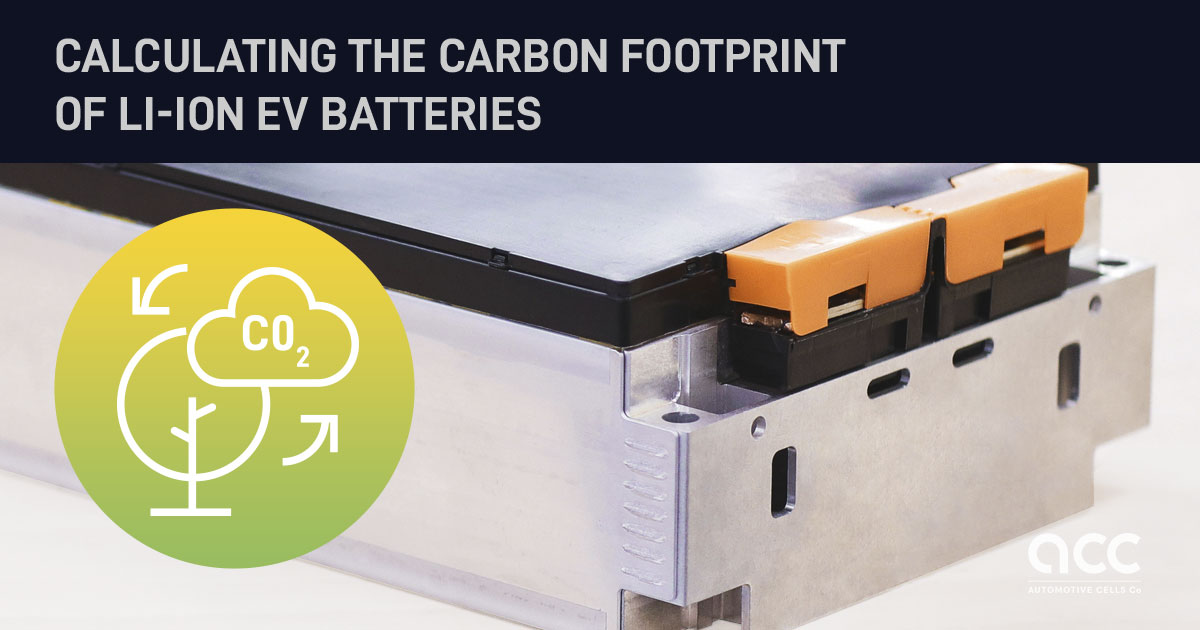Calculating the carbon footprint of Li-ion EV batteries

The ACC project has been developed in line with the EU and French objectives to contribute to the energy transition. To be consistent with these objectives, we need to continually work to make the carbon footprint of our products as low as possible.
Our Corporate Social Responsibility (“CSR”) approach therefore naturally started with the calculation of our products’ carbon footprint. Not only this is a must to help us to identify our main CSR impacts and make the right decisions to improve our environmental performance, but this assessment gave us a starting point to track our progresses on the long run.
On paper, calculating the carbon footprint of batteries seemed simple enough and several methods have been proposed by the EU and other organizations over the years. But in reality, accurately measuring the environmental footprint, in particular the carbon footprint of batteries, is extremely challenging.
Why is calculating the environmental footprint of batteries challenging?
The value chain of lithium-ion batteries is complex: the production of the cells requires about 20 materials from different countries, which will go through several refining processes, again in several locations around the world and with various techniques. These raw materials then enter a highly energy-intensive manufacturing process, with varying impacts on the climate depending on the energy source used. Getting reliable data on the impact of these materials is tricky.
The second challenge presented by this calculation is that cells are first assembled in modules by the battery manufacturers, and then the modules are assembled by the automotive manufacturers in battery packs made of different materials and using different production processes which also influence the carbon footprint of the battery. Identifying the boundaries of the different activities, who is responsible for what and what emissions are being produced isn’t simple.
And then there is the third difficulty: calculating the carbon impact of the battery’s end of life and recycling. Recycling batteries is a fairly new area and many uncertainties remain. At this stage, we don’t know how to include the benefits of recycling in the calculation.
Notwithstanding the fact that current methodologies often do not consider the use phase. During this phase, the local energy mix from which the electricity used to charge the battery also influences the carbon footprint.
This is why we used a method that measures the direct and indirect energy consumption at different stages of our production. Ultimately, our goal will be to extend these calculations to the complete lifecycle of our products… and act at each level of the battery lifecycle to reduce greenhouse gas emissions.
In the next days, we’ll be digging deeper into the impact of mobility on greenhouse gas emissions and Europe’s commitments to reduce it, what can be leveraged to lower the carbon footprint of batteries, and what choices we have made at ACC to keep our impact on the environment as low as possible. Stay tuned…